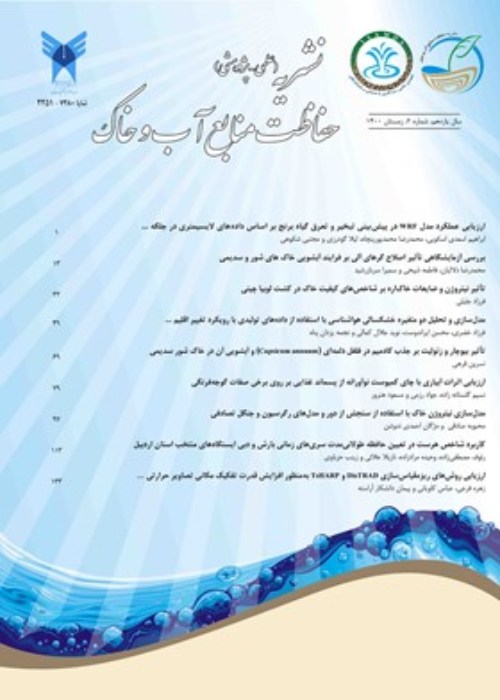Reduction of Turbulence Reduction in Water Tanks with Vertical and Horizontal Walls Using Ansys Numerical Model
Tanks structures must maintain their applications after large earthquakes, and on the other hand, these structures must behave in a way that does not cause damage during an earthquake. Therefore, the application of the baffles is one of the suitable methods to tackle with earthquake inertial forces. The main idea in baffle systems is to reduce the frequency of the structure and bring it to a value less than the frequencies containing the dominant earthquake energy. Baffles installed inside water tanks can reduce a significant amount of earthquake acceleration in the body and crest of the tank during an earthquake.
In order to investigate the effects of the vertical and horizontal plates adjusted through the reservoir tanks, the flow characteristics were simulated by employing the CFD (Ansys Fluent). Two vertical and horizontal plate were designed for this purpose. To decreasing the error of mesh sizes, the different mesh sizes with different types of the meshes were employed and the results of the simulation were compared together to find out the suitable mesh geometry. Moreover, to validate the numerical model, the height of the water waves was compared by the past literature to make sure of the suitable numerical model. Thus, by increasing the earthquake accelerin in the numerical model, the flow properties were investigated according to the different conditions of the numerical modeling.. Displacement and shear stress at the top of the tanks were measured through the numerical models due to different tests condition in controlled and uncontrolled statuses. Furthermore, the conducted acceleration through the tank liquid was measured over the time for different numerical models. Some hydraulic parameters were considered for comparison through the discussion section such as water surface elevation so these parameters were extracted from the numerical results by the software advices.
The comparison between numerical results and past studies indicated that the presented numerical model has acceptable error and the elevation of the water waves through the tanks has good agreement with experimental pasts models through the literatures. Furthermore, the results of the mesh analysis showed that the error of the square mesh is approximately 11.2 percent compared to the triangular shape. As a result, the squire mesh with less sizes were considered to solve the flow’s equation through the numerical model. The initial results of the vertical and horizontal baffles illustrated that presence of the baffles can significantly reduce the fluctuation of the displacement, shear stress and liquid acceleration over the time. And the agitations of tests function over the time were tended to the less values compared by the initial time. The results indicate that equipping the tanks with baffle systems has a good performance on safety and improving the dynamic behavior of the tanks and this approach has a significant effect on the displacement and acceleration responses of the studied tank. Tanks with vertical baffles will perform better due to higher energy absorption. Also, as the water depth in the reservoir increases, the amount of energy dissipation for the reservoirs were decreased.
The results of the numerical model calibrated with experimental data showed that the tank equipped with the vertical baffle produces more control force and damping than the horizontal baffle and has a better performance than the horizontal walls, furthermore, they reduce the pressure on the wall. Also, the results indicate that equipping the tanks with baffle systems can increase the safety through the tanks and improving the dynamic behavior of the tanks. Finally, the tanks with vertical baffles had better perform to absorption of the energy. Also, as the water depth in the reservoir increases, the amount of energy dissipation for the reservoirs were decreased. Comparison over the time among the extracted data from numerical model showed that due to passed time, the fluctuation of the investigated parameters such as displacement and shear stress of the top of the tank attained less values which can show that the controlled tank has much stability along the earthquakes.
- حق عضویت دریافتی صرف حمایت از نشریات عضو و نگهداری، تکمیل و توسعه مگیران میشود.
- پرداخت حق اشتراک و دانلود مقالات اجازه بازنشر آن در سایر رسانههای چاپی و دیجیتال را به کاربر نمیدهد.


